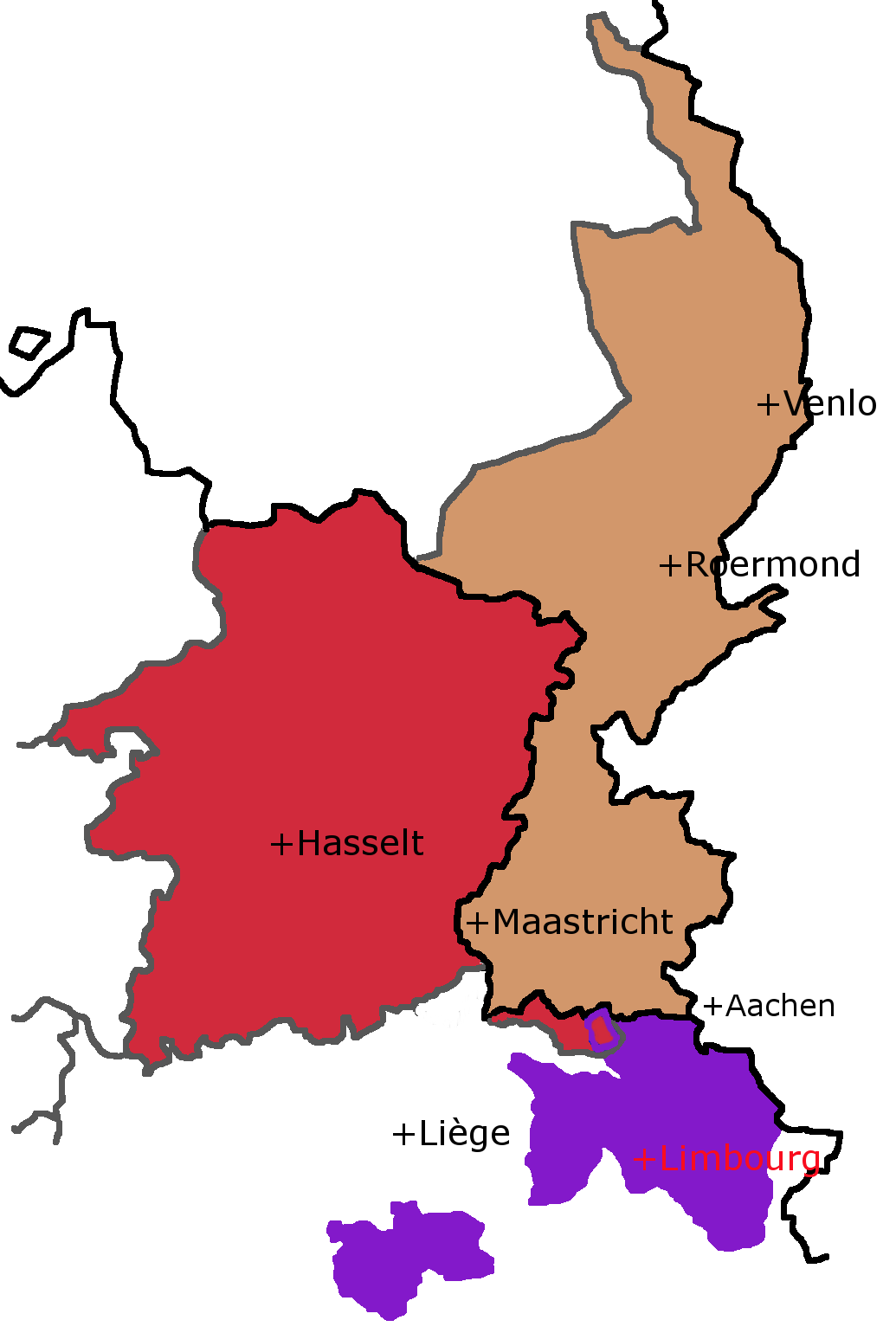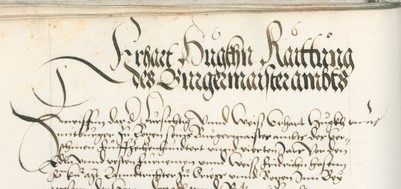|
Voerendaal
Voerendaal (; li, Voelender) is a municipality and a town in the southeastern Netherlands. Population centres ''Dutch topographic map of the municipality of Voerendaal, June 2015'' History The Romans left the ruins from a Roman villa rustica as a legacy. In 1049 pope Leo IX initiated the Catholic Church - Sint Laurentiuskerk. During medieval times many castles were built: Cortenbach, Haeren, Puth, Rivieren and Terworm. Also castles such as Hoenshuis and Overst Voerendaal. The area was mined for marl (mergel in Dutch) and coal. Transportation Railway Station: Klimmen-Ransdaal, Voerendaal Notable people * Roel Brouwers Roel Brouwers (; born 28 November 1981) is a Dutch former footballer who last played for Roda JC Kerkrade in the Dutch Eredivisie. Club career Brouwers played the majority of his professional career in Germany. He started at hometown amateur s ... (born 1981) a Dutch former footballer with 289 club caps, lived in Voerendaal while playing for B ... [...More Info...] [...Related Items...] OR: [Wikipedia] [Google] [Baidu] |
Klimmen
Klimmen (Limburgish: ''Klumme'') is a village in the Dutch province of Limburg. It is located in the municipality of Voerendaal, about 7 km west of Heerlen. History The village was first mentioned in the middle of the 11th century as "de Clumena". The etymology is unclear. Klimmen developed in the Early Middle Ages. The St Remigius Church is a three aisled basilica-like church. It has 11th or 12th century elements. In the 14th century, the tower was added. The church was redesigned between 1904 and 1906 by Pierre and Joseph Cuypers. Klimmen was a separate municipality until 1982, when it was merged with Voerendaal. Transportation The Klimmen-Ransdaal railway station opened in 1915 on the Heerlen Heerlen (; li, Heële ) is a city and a municipality in the southeast of the Netherlands. It is the third largest settlement proper in the province of Limburg. Measured as municipality, it is the fourth municipality in the province of Limburg ... to Schin op Geul railw ... [...More Info...] [...Related Items...] OR: [Wikipedia] [Google] [Baidu] |
Weustenrade
Weustenrade is a hamlet in the municipality of Voerendaal of the province Limburg, Netherlands. It is located near Hoensbroek, Voerendaal and Klimmen. The village was first mentioned in 1420 as Woestenroede, and means "desolate cultivated forest". It was home to 105 people in 1840. There are still several old seventeenth-century houses, among which the 'oliemolen The Oliemolen (literally Oilmill) is a 16th-century watermill located at the foot of a steep hill in the Aambos, Heerlen in the Netherlands. The name already tells us much about its function, extracting oil, but this was not always the case as ...' (oilmill). References Populated places in Limburg (Netherlands) Voerendaal {{LimburgNL-geo-stub ... [...More Info...] [...Related Items...] OR: [Wikipedia] [Google] [Baidu] |
Ubachsberg
Ubachsberg () is a village in the Dutch province of Limburg. It is located in the municipality of Voerendaal.''ANWB Topografische Atlas Nederland'', Topografische Dienst and ANWB, 2005. The village was first mentioned in 1380 as "opten Berch", and means "hill of the Ubachs family". Ubachsberg developed in the Early Middle Ages on the road from Simpelveld to Sittard Sittard (; ) is a city in the Netherlands, situated in the southernmost province of Limburg. The town is part of the municipality of Sittard-Geleen and has almost 37.500 inhabitants in 2016. In its east, Sittard borders the German municipal .... The Catholic St Bernardus Church is a neoclassic cruciform church built in 1842. Restaurant De Leuf (2 Michelin stars) is located in the village. File:Ubachsberg-Kapel Oude Schoolstraat.JPG, Chapel in the "Oude Schoolstraat" File:Ubachsberg-Kerk.JPG, Sint-Bernarduskerk File:Ubachsberg-Beeld Hunsstraat.JPG, Maria statue Hunsstraat File:Ubachsberg-Kalkovens Daelsw ... [...More Info...] [...Related Items...] OR: [Wikipedia] [Google] [Baidu] |
Klimmen-Ransdaal Railway Station
Klimmen-Ransdaal railway station is located between the villages of Klimmen and Ransdaal in the municipality of Voerendaal, the Netherlands. The station was designed in the traditionalist style by and built in 1913 on the . The station opened on 1 March 1915. It became national heritage site #507162 on 11 November 1998. Train services Klimmen-Ransdaal station is served by Arriva Arriva plc is a British multinational corporation, multinational public transport company headquartered in Sunderland, England.train services: *''Stoptrein'' S4: Maastricht–Heerlen References External links [...More Info...] [...Related Items...] OR: [Wikipedia] [Google] [Baidu] |
Limburg (Netherlands)
Limburg (, ) is the southernmost of the twelve provinces of the Netherlands. It is bordered by Gelderland to the north and by North Brabant to its west. Its long eastern boundary forms the international border with the state of North Rhine-Westphalia in Germany. To the west is the international border with the similarly named Belgian province of Limburg, part of which is delineated by the river Meuse. The Vaalserberg is on the extreme southeastern point, marking the tripoint of the Netherlands, Germany and Belgium. Limburg's main municipalities are the provincial capital Maastricht (population 120,837 as of January 2022), Venlo (population 102,176) in the northeast, as well as Sittard-Geleen (population 91,760, bordering both Belgium and Germany) and Heerlen (population 86,874) in the south. More than half of the population, approximately 650,000 people, live in the south of Limburg, which corresponds to roughly one-third of the province's area proper. In South Limbu ... [...More Info...] [...Related Items...] OR: [Wikipedia] [Google] [Baidu] |
Municipalities Of The Netherlands
As of 24 March 2022, there are 344 municipalities ( nl, gemeenten) and three special municipalities () in the Netherlands. The latter is the status of three of the six island territories that make up the Dutch Caribbean. Municipalities are the second-level administrative division, or public bodies (), in the Netherlands and are subdivisions of their respective provinces. Their duties are delegated to them by the central government and they are ruled by a municipal council that is elected every four years. Municipal mergers have reduced the total number of municipalities by two-thirds since the first official boundaries were created in the mid 19th century. Municipalities themselves are informally subdivided into districts and neighbourhoods for administrative and statistical purposes. These municipalities come in a wide range of sizes, Westervoort is the smallest with a land area of and Súdwest-Fryslân the largest with a land area of . Schiermonnikoog is both the least p ... [...More Info...] [...Related Items...] OR: [Wikipedia] [Google] [Baidu] |
List Of Municipalities Of The Netherlands
As of 24 March 2022, there are 344 municipalities ( nl, gemeenten) and three special municipalities () in the Netherlands. The latter is the status of three of the six island territories that make up the Dutch Caribbean. Municipalities are the second-level administrative division, or public bodies (), in the Netherlands and are subdivisions of their respective provinces. Their duties are delegated to them by the central government and they are ruled by a municipal council that is elected every four years. Municipal mergers have reduced the total number of municipalities by two-thirds since the first official boundaries were created in the mid 19th century. Municipalities themselves are informally subdivided into districts and neighbourhoods for administrative and statistical purposes. These municipalities come in a wide range of sizes, Westervoort is the smallest with a land area of and Súdwest-Fryslân the largest with a land area of . Schiermonnikoog is both the least ... [...More Info...] [...Related Items...] OR: [Wikipedia] [Google] [Baidu] |
Burgemeester
Burgomaster (alternatively spelled burgermeister, literally "master of the citizenship, town, master of the borough, master of the fortress, master of the citizens") is the English form of various terms in or derived from Germanic languages for the chief magistrate or executive of a city or town. The name in English was derived from the Dutch language, Dutch ''burgemeester''. In some cases, Burgomaster was the title of the head of state and head of government of a sovereignty, sovereign (or partially or de facto sovereign) city-state, sometimes combined with other titles, such as Hamburg's Government of Hamburg, First Mayor and President of the Senate). Contemporary titles are commonly translated into English as ''mayor''. Historical use * The title "burgermeister" was first used in the early 13th century. *In history (sometimes until the beginning of the 19th century) in many Free imperial city, free imperial cities (such as Bremen, Hamburg, Lübeck etc.) the function of burg ... [...More Info...] [...Related Items...] OR: [Wikipedia] [Google] [Baidu] |
Villa Rustica
Villa rustica () was the term used by the ancient Romans to denote a farmhouse or villa set in the countryside and with an agricultural section, which applies to the vast majority of Roman villas. In some cases they were at the centre of a large agricultural estate, sometimes called a '' latifundium''. The adjective ''rustica'' was used only to distinguish it from a much rarer sub-urban resort villa, or ''otium villa'' built for purely leisure and luxury, and typically located in the Bay of Naples. The ''villa rustica'' would thus serve both as a residence of the landowner and his family (and servants) and also as a farm management centre. It would often comprise separate buildings to accommodate farm labourers and sheds and barns for animals and crops. The villa rustica's design differed, but usually it consisted of two parts; the ''pars urbana'' (main house), and the ''pars rustica'' (farm area). List of villae rusticae Austria * , Altheim, Austria Bosnia-Herzegovina * ... [...More Info...] [...Related Items...] OR: [Wikipedia] [Google] [Baidu] |
Coal Mining
Coal mining is the process of extracting coal from the ground. Coal is valued for its energy content and since the 1880s has been widely used to generate electricity. Steel and cement industries use coal as a fuel for extraction of iron from iron ore and for cement production. In the United Kingdom and South Africa, a coal mine and its structures are a colliery, a coal mine is called a 'pit', and the above-ground structures are a ' pit head'. In Australia, "colliery" generally refers to an underground coal mine. Coal mining has had many developments in recent years, from the early days of men tunneling, digging and manually extracting the coal on carts to large open-cut and longwall mines. Mining at this scale requires the use of draglines, trucks, conveyors, hydraulic jacks and shearers. The coal mining industry has a long history of significant negative environmental impacts on local ecosystems, health impacts on local communities and workers, and contributes heavily ... [...More Info...] [...Related Items...] OR: [Wikipedia] [Google] [Baidu] |
Marl
Marl is an earthy material rich in carbonate minerals, clays, and silt. When hardened into rock, this becomes marlstone. It is formed in marine or freshwater environments, often through the activities of algae. Marl makes up the lower part of the cliffs of Dover, and the Channel Tunnel follows these marl layers between France and the United Kingdom. Marl is also a common sediment in post-glacial lakes, such as the marl ponds of the northeastern United States. Marl has been used as a soil conditioner and neutralizing agent for acid soil and in the manufacture of cement. Description Marl or marlstone is a carbonate-rich mud or mudstone which contains variable amounts of clays and silt. The term was originally loosely applied to a variety of materials, most of which occur as loose, earthy deposits consisting chiefly of an intimate mixture of clay and calcium carbonate, formed under freshwater conditions. These typically contain 35–65% clay and 65–35% carbonate. The te ... [...More Info...] [...Related Items...] OR: [Wikipedia] [Google] [Baidu] |





